It will not be long before the entire Virgin Trains East Coast fleet sports a completely new look. The old, uninspiring East Coast grey is gradually giving way to a new vinyl-based livery, designed by Ray Stenning and unveiled on the launch train at King’s Cross in March.
Invited to see how a train is transformed, RAIL arrives at Bounds Green on an overcast Friday morning in June. The depot entrance is tucked away to the side of some attractive Victorian cottages, in yet another part of north London that’s had some gentrification. Sidings on the depot site mark what’s left of the beginnings of the old Palace Gates line, long gone from the network.
Inside the depot, Bounds Green appears much more extensive, compared with the view from the main line. And with several sets on depot for maintenance and livery work, and a couple of Class 08 shunting locomotives going about their business, there’s plenty going on.
VTEC Fleet Planning Manager Glenn Woodbridge began his railway career as a cleaner at this key East Coast Main Line depot 25 years ago. He is now responsible for the Class 91 and Mk 4 sets that form the mainstay of the depot.
According to Woodbridge, each day VTEC needs 26 Mk 4 sets for service (out of a total of 30, although there are 31 Class 91 locomotives, allowing a little more flexibility in terms of the motive power available). Because of the need to have rolling stock in the right place for Monday mornings, 27 sets are needed for service on a Sunday, which can add to the pressure.
Set BN23 has been at Bounds Green for the past week, having come out of service on the previous Sunday and been carefully hand-washed that evening. The paintwork is in good condition, but the set has been rubbed down to remove any imperfections in the finish - this allows the vinyl to be applied without showing up what lies beneath.
A team from contractor Stewart Signs is busy applying large sheets of vinyl to the train. With the finishing touches now being made to the set, it will go back into service on the following morning.
Over in the adjacent shed stands 91101 in its distinctive Flying Scotsman ‘wrap’ (VTEC is thinking of updating this), as well as 91110 Battle of Britain Memorial Flight (the livery for which RAIL played a large part in organising).
The wrap for the latter was designed by Paul Gentleman (who also designed 91111 For The Fallen) and applied by Aura Graphics, a different company to that carrying out the current work on the fleet.
Both 91110 and 91111 will be among the last in the fleet to be rebranded, as amended designs will be required incorporating the special artwork and the VTEC corporate image.
“Vinyl is easier to maintain than paintwork,” says Woodbridge. “It’s also easier to clean.” There is also a consistency of design when compared with paintwork, although the latter is undoubtedly still a sensible option for many livery and branding projects.
While the average passenger probably doesn’t notice the difference, Woodbridge explains that doors are painted to prevent the vinyl peeling off in everyday service.
The trains are already painted into a basic overall silver or grey that was never intended to be a permanent livery - several years ago the fleet inherited from National Express East Coast was repainted under Directly Operated Railways ownership with purple East Coast branding.
Stewart Signs has been contracted to undertake the rebranding of the Class 91 and Mk 4 sets as well as the HSTs - that’s 45 trains in total (the entire VTEC fleet).
The Mk 4 fleet is currently being rebranded in the main wrap - and on the day of RAIL’s visit it had reached the tenth week of the project. It is expected that the trains will be re-vinyled at a rate of one per week, and Stewart Signs Marketing Manager Gary Stanley says: “With 21 to go, we anticipate the process being completed by mid-November.
“The Mk 3s are now being rebranded in the launch wrap, too. These are being completed at a rate of one per fortnight for the first two trains. Then, once we have ironed out the process, these will be completed at a rate of one every week. With another 13 to go, we anticipate this to be completed by early October.
“We are conducting the rebrand in this way to ensure the operational effectiveness of the fleet and eliminate any impact on services.
“The livery is a complete wrap, but the project is much more than just application of the new wraps. We are also conducting elements of bodyside repair to ready the sets for the new livery, with painting of various elements, filling and surface preparation.”
For the launch event in March, Stewart Signs had to de-brand and then apply interim branding to as many of the Class 43 HST power cars, Class 91 locomotives and Driving Van Trailers as possible, with the basic Virgin branding to ensure the new brand was communicated to customers.
“We successfully interim branded most of the fleet in this fashion over the first weekend at depots across the country, in time for the franchise launch on March 2,” says Stanley.
At the same time, Stewart Signs was secretly applying the two launch liveries at Bounds Green, ready for the high-profile event at King’s Cross. It then began the rollout of the main launch brand wrap on the Mk 4 fleet from mid-April.
At Bounds Green, Project Manager and Co-ordinator Claire Maney is overseeing the finishing of Mk 4 set BN23 as well as 91107 Skyfall - the locomotive at the head of the train promoting the most recent James Bond film.
“I walk about 45 miles a week,” says Maney, who begins the cycle by checking the work of the preparation team whose job is to prepare the surface of the train and the areas that need painting.
“If it’s not prepared properly, paint won’t stick to the surface,” she explains. With adequate pressure applied to the surface, the adhesion of the vinyl becomes stronger and stronger.
A fair bit of trimming takes place, as the long sheets of vinyl are applied to the sides of the train in what basically amounts to a giant wallpapering operation - cutting around windows and ventilation grilles, and so on. In hard to reach areas, paint is applied that matches the design of the vinyl. Edging tape is also applied to prevent dirt getting inside and underneath the surface of the vinyl. On a clean train, the effect should be that you can’t see the join.
Maney gets help on a Wednesday and a Thursday (the busiest days for applying vinyl to the train). That leaves Friday as insurance - the day on which she likes to have everything done by, giving her time to resolve any outstanding problems. Rectification work may also be needed, which can increase the amount of time it takes for vinyl to be applied.
On the day of RAIL’s visit, the completion of work on 91107 Skyfall has been held back especially, to allow the application of the final few panels - it would normally have been completed the previous day.
This will be the eighth ‘91’ to be completed, although by the day of the visit ten Mk 4 sets had already been completed (RAIL 778).
Guy Allen and John Duckett are the two experienced men working on 91107 Skyfall, which itself carried a promotional wrap for the film some months back before briefly reverting to East Coast grey.
Allen has worked on projects for First Great Western and Merseyrail, and even on vinyls for a train promoting a Harry Potter film, while Duckett wrapped the first train in England at Old Oak Common depot some ten years ago. If anyone is an expert on wrapping trains - a precise art involving concentration, Stanley knives and a squeegee (to rub down air bubbles) - it’s these two men.
“It’s nice to see the difference between one train and another,” says Allen from the top of a platform alongside the locomotive.
Duckett prefers the exterior work to the interior work - Stewart Signs works on all aspects of train branding, and has even brightened the insides of those essential on-train conveniences. “It’s not so nice being stuck inside a toilet!” he explains.
When all of the fleet has been reliveried, VTEC will turn its attention to the interiors - this includes the recovering of seats, carpets and cushions to a new design, and work on the toilets in both Standard and First Class.
While most of the Class 91/Mk 4 fleet (and all of the HSTs) will be replaced by 65 five-car and nine-car IEP trains (the new Class 800/801s) from 2018 onwards, between six and eight of the older trains are being retained to work Anglo-Scottish trains between London and Edinburgh.
It’s therefore important that the interior and exterior appearance of the train continues to set a high standard.
https://www.stewartsigns.co.uk/
- This feature was published in RAIL 779 on July 22 2015

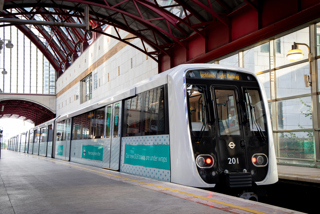
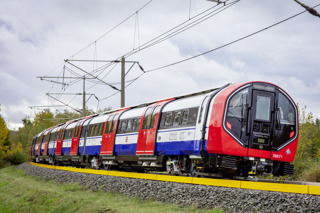

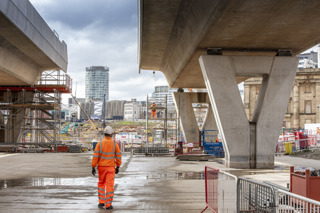
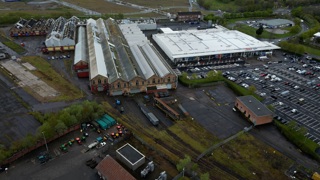



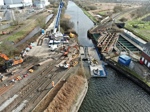







Login to comment
Comments
No comments have been made yet.